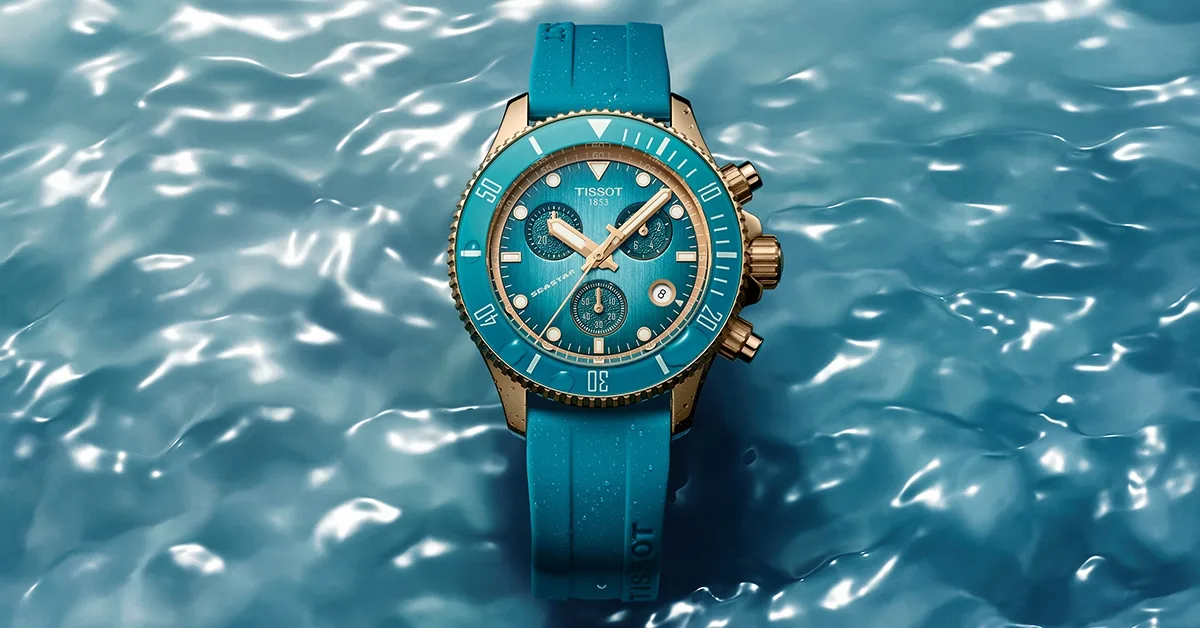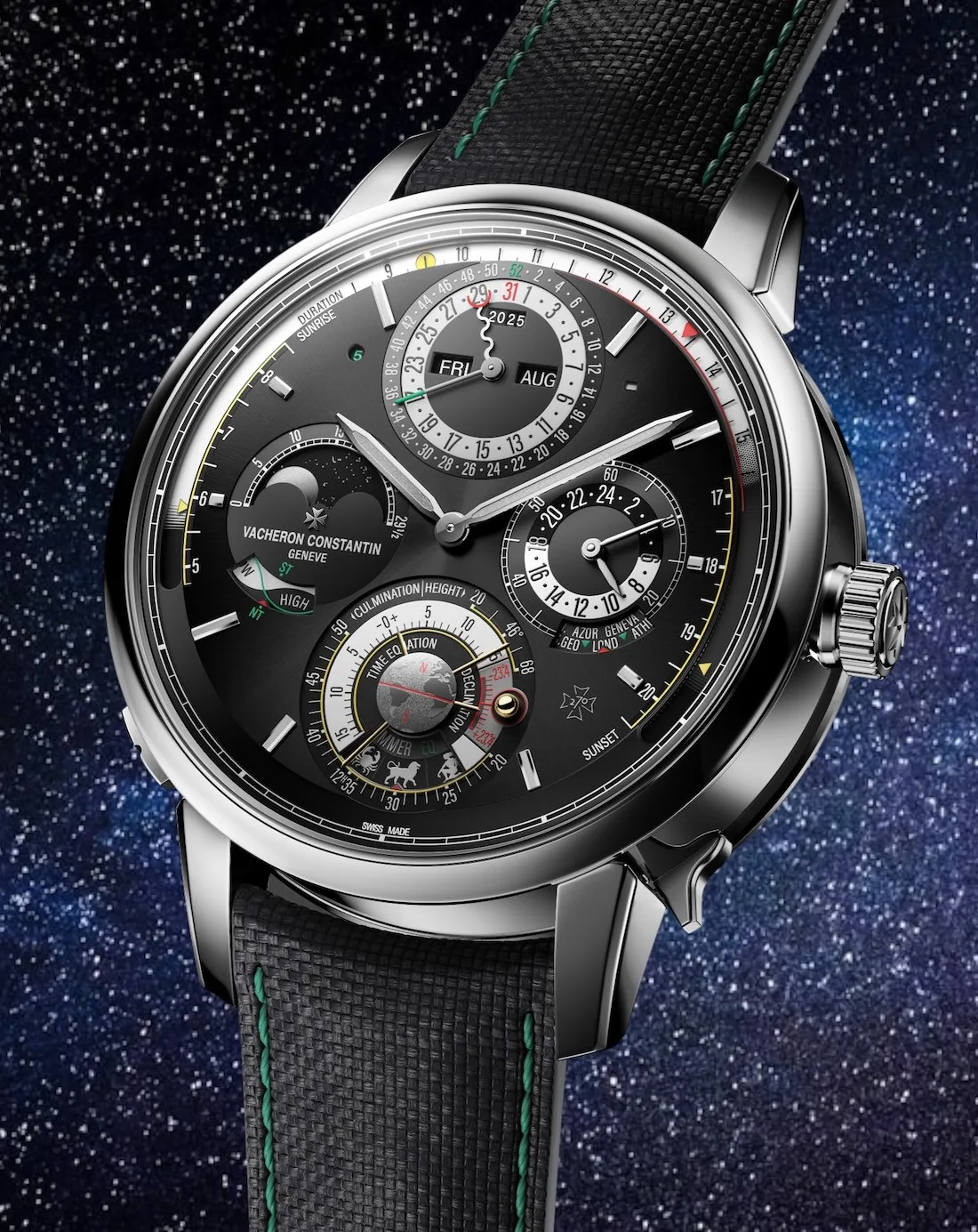Anyone who knows a little about the time, dedication and passion it takes to become a watchmaker, would understand why Raúl Pagès, winner of the first-ever Louis Vuitton Watch Prize for Independent Creatives, was reduced to tears as he approached the stage to receive the coveted prize from Jean Arnault himself, Director of Watches at Louis Vuitton.
Speaking about the Prize, Jean Arnault said, “This initiative is not to find the next watchmaker, to then recruit him or her into the LVMH group, but to help them flourish afterwards in the industry as a whole. I want it to be around the mentorship programme we put forward.”
It was a well-deserved win for an unsung, but brilliant, underdog artisan watchmaker, whose initial intended career was the arts. A serendipitous conversation with a close friend made Pagès change his mind and go down the mechanical watchmaking route. Initially, he worked with Parmigiani Fleurier in its restoration department. “I loved restoration work,” he told me, “the ability to restore a watch or clock back to its original condition.” It was restoring old marine chronometers, from Arnold and Earnshaw, that provided the inspiration behind the RP1, the timepiece that won him the new Louis Vuitton award.
“Being honoured by the jury of the Louis Vuitton Watch Prize 2023-2024 is the best possible recognition of my work as an independent watchmaker.”
— Raúl Pagès

Pagès left Parmigiani to be an independent watchmaker because he wanted artistic freedom. His first creation was a tortoise automaton to prove what he was capable of. His skill led him to be commissioned by microbrands, among them, Massena Labs, with which he cooperated in the production of their celebrated Magraph watch. At the same time, he was working on his first independent series, the Soberly Onyx, based on CYMA movements.
So far, nothing extraordinary. But then, the young Pagès, shocked the horological world by solving a problem that had eluded the masterminds of watchmaking for over two centuries, reversing time to when financial success in trade resulted from precision in navigation across the seas. To traverse the oceans, a marine chronometer was needed, the accuracy of which depended on the escapement – that part of the watch that regulates and controls the time output. Watches had tended to use the lever escapement – and still do today – because it is inexpensive, easy to maintain, and robust. The problem is friction, which would cause it to slow down and lose time.
One of the alternatives in period was the détente escapement, generally attributed to John Arnold and Thomas Earnshaw at the end of the 18th century. Instead of the sliding action of the lever escapement, the pallet wheel is “pushed” by a rod – which is generally known as an impulse form. The contact is minimal and in consequence, the movement is more efficient and accurate.
The weakness here was its sensitivity to shock and inertia. George Daniels himself tried to find a solution, and he did, but it only worked in a pocket watch. Pagès found a way to solve the problem in a wristwatch, so it continued to operate even when subjected to shocks.

Raúl Pagès Régulateur à Détente RP1 – The dial, where hours, minutes and seconds are displayed separately, was conceived as a tiered architectural form using Le Corbusier’s 1959 special colour palette, Polychromie Architecturale.
His watch, the Régulateur à Détente RP1, is therefore a first, and a remarkable horological achievement. It was completely conceived, designed, and made by Pagès in his small atelier in Les Brenets, Switzerland.
The Prize is a chance for Raúl Pagès to progress in his career, as Louis Vuitton will now garner its resources to help the young watchmaker develop his ideas, provide funding, technical knowhow, and marketing. It is well-earned success for the man who has cracked an age-old, horological conundrum. “This award reassures existing collectors in acquiring our creations,” Pagès commented. “It will spark their interest and attract media attention, which will allow me to consolidate my name and brand internationally.” He also expressed his extreme gratitude to Louis Vuitton, and in particular to Jean Arnault, for organizing the Prize. “This is a turning point in my career and opens up new opportunities.”

Detail of the pallet wheel and impulse arm of the détente escapement in the RP1.
Rexhep Rexhepi, one of the most internationally-recognised artisan watchmakers of our time and member of the jury, said of Pagès, “His heart is in the right place. It is not just what he has demonstrated with his watch, but how he loves the craft and the work.” The decision, according to Auro Montanari, the renowned watch collector among the jury who selected the winner, “Was unanimous, not just for the technical achievement that represented, but also for his dedication to making watches in an artisan way.”
The Louis Vuitton Watch Prize for Independent Creatives has instantly become the most important recognition in independent horology. With the funds from the prize, Pagès intends to develop other watch movements. The resources now at his disposal will elevate his ability to combine his creativity with an enhanced direction in product development and commercial success. On top of the grant he receives, there is a one-year mentorship by a dedicated team of experts – watchmakers, engineers and craftsmen – at Louis Vuitton’s La Fabrique du Temps to assist in the needs of his projects.
Raúl Pagés is here to stay.
Words: Dr Andrew Hildreth

















Show Comments +